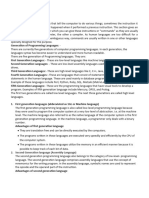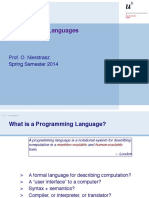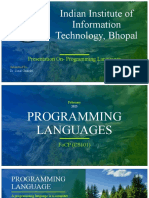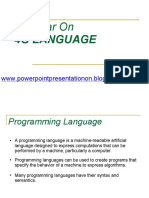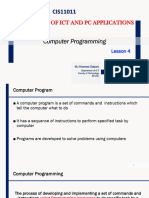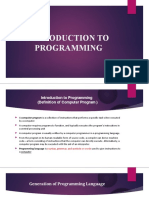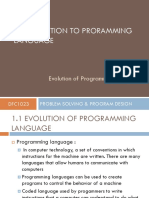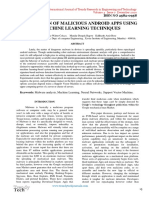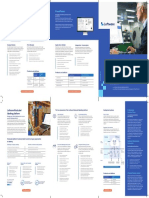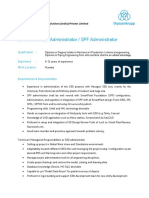0% found this document useful (0 votes)
52 views18 pages1.1 Describe The Programming Language
The document provides an overview of programming languages through history. It discusses [1] machine languages as the lowest-level languages understood by computers as sets of numbers, [2] assembly languages that introduced symbolic representations but still required rewriting for different CPU architectures, and [3] high-level languages of the 3rd generation like Fortran and COBOL that made programming more user-friendly. It also touches on [4] 4th generation languages designed for business applications and database access and [5] 5th generation languages still in development that are based on artificial intelligence to solve problems without algorithms.
Uploaded by
Thinesh RaoCopyright
© © All Rights Reserved
We take content rights seriously. If you suspect this is your content, claim it here.
Available Formats
Download as PPTX, PDF, TXT or read online on Scribd
0% found this document useful (0 votes)
52 views18 pages1.1 Describe The Programming Language
The document provides an overview of programming languages through history. It discusses [1] machine languages as the lowest-level languages understood by computers as sets of numbers, [2] assembly languages that introduced symbolic representations but still required rewriting for different CPU architectures, and [3] high-level languages of the 3rd generation like Fortran and COBOL that made programming more user-friendly. It also touches on [4] 4th generation languages designed for business applications and database access and [5] 5th generation languages still in development that are based on artificial intelligence to solve problems without algorithms.
Uploaded by
Thinesh RaoCopyright
© © All Rights Reserved
We take content rights seriously. If you suspect this is your content, claim it here.
Available Formats
Download as PPTX, PDF, TXT or read online on Scribd
/ 18


